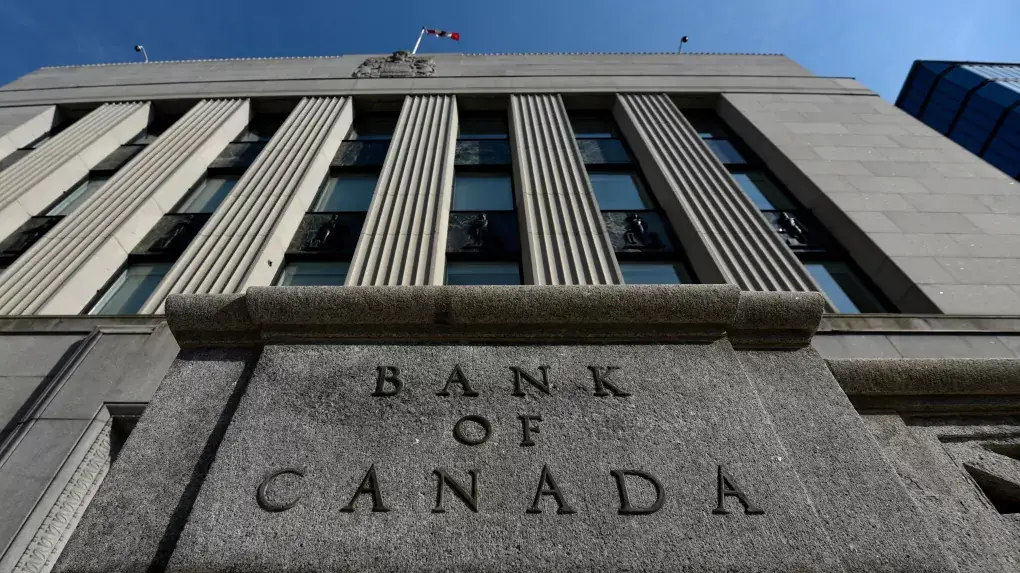Central Bank Lowers Rates to Stimulate Canada’s Slowing Economy
The Bank of Canada dropped its policy rate to 2.25%, which is the second time this year that it has lowered interest rates. This change shows that people are becoming more worried about the economy’s slow growth and falling consumer demand in many areas.
Officials expect that lower borrowing costs would lead to more company investment and consumer spending, which will help the economy grow and create jobs. The choice also shows a careful approach that tries to balance the dangers of inflation with the pace of the economy’s recovery.

Source: NTV
Weak Labor Market Highlights Need for Targeted Economic Policies
As job creation and pay growth remain low across the country, a deteriorating labor market has become a major challenge. If jobs keep being hard to find, people may not be able to spend as much, which would lower total demand and productivity growth even further.
The central bank’s change in policy shows that they understand the underlying labor problems that might hold down the recovery. To stabilize long-term economic performance, it will be important to improve participation and productivity in the workforce.
Inflation Stabilizes but Remains Above Pre-Pandemic Levels
Inflation has slowed down, although it is still between 2.5% and 3%, which is higher than the norm before the epidemic. This pattern shows that inflation will not go down below 2% in the near future since structural pressures are still there.
The central bank wants to keep inflation expectations in check without relying too much on short-term price indicators like housing or fuel. Its new plan shows that it is taking a practical approach to finding a balance between stable inflation and long-term growth.
Recommended Article: South Korea Deploys 3,900 Troops to Secure APEC Summit
Policy Direction Aims to Restore Business and Consumer Confidence
The Bank of Canada’s decision to ease monetary policy shows that it strongly supports enterprises that are dealing with uncertain global conditions. Companies are likely to invest in growth and new ideas while keeping up with their debt payments if borrowing costs go down.
Lower lending rates might also help consumers by making it easier for them to spend money and making the market more liquid. But for the long term to work, the private sector needs to react rapidly to the reduced rate environment.
Economic Outlook Points to Gradual Recovery Into 2026
The central bank has said that it is unlikely to lower rates again before its next policy meeting, which is set for December. If the economy doesn’t pick up speed again, analysts think that more changes might happen in early 2026.
This moderate posture shows caution in the face of unforeseen global economic challenges that might have an effect on the home economy. Policymakers are keeping their options open so they may respond to changing market conditions without tightening too soon.
Communication and Transparency Remain Key to Market Stability
For people to keep trusting the Bank of Canada, politicians, and investors, they need to be able to talk to each other clearly. Clear information helps people and businesses prepare well when interest rates change and the economy is under pressure from outside forces.
It’s important for the central bank to keep this confidence while it works to balance growth, stability, and inflation management. Proactive communication makes things less ambiguous and makes future judgments about monetary policy more believable.
Balancing Growth and Inflation in a Shifting Economic Landscape
The Bank of Canada’s most recent decision shows that they are changing their strategy to focus on boosting long-term growth instead of just keeping inflation in check. Its policies are meant to keep things stable while giving the economy time to adjust to life after the epidemic.
Inflation is slowing down, but global problems are still going on. Canada’s economy will depend on synchronized fiscal and monetary solutions. In the next several months, we’ll find out if this strategy works to boost productivity and consumer confidence across the country.























